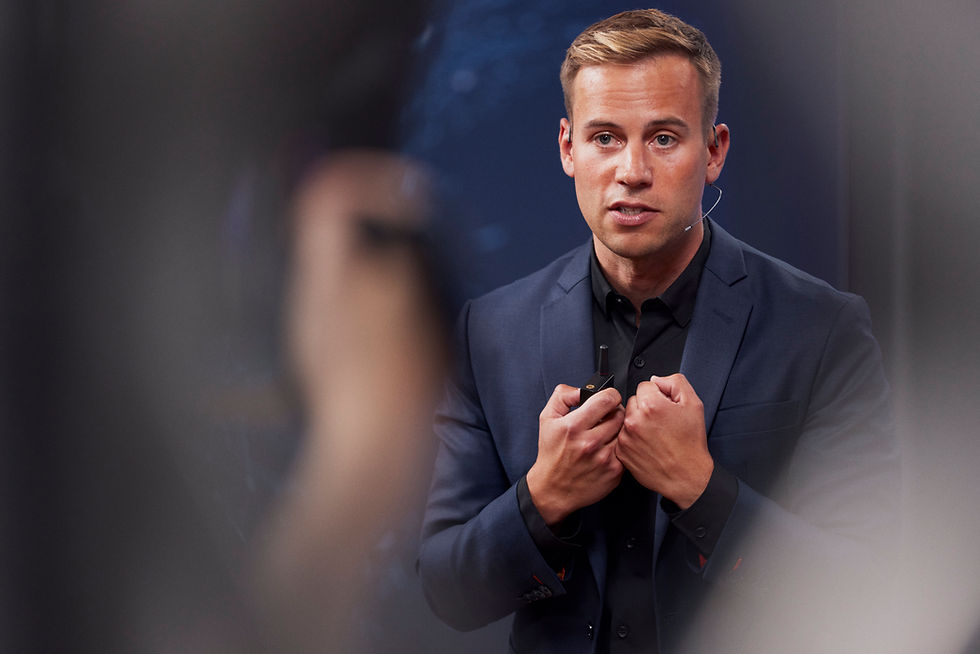You can't change human algorithms
- Christoph Burkhardt

- Jan 24, 2023
- 4 min read
But you can change what goes in and what comes out. And you should.

Humans evolved over millennia. To our knowledge, Homo sapiens is the smartest species. Are humans the smartest? A major paradigm shift is imminent. A fundamental, far-reaching, and transformative shift that we cannot even begin to understand what will happen to our intelligence and us.
Many homes and factories have smart robots with human-like traits. Industrialized manufacturing and the use of machines to replace physical labor was a historic breakthrough, but now it's just another step in human development. Due to the coming of intelligence, factories and businesses worldwide will change. For the first time, we created a tool that may well outsmart us. The singularity may occur in our lifetime. This development scares some and intrigues others. Most people are unaware of the consequences of this dramatic shift. If you thought the last fifty years were revolutionary, wait for the next fifty. If you think change is happening fast now, prepare for more. The biggest change in 10,000 years is coming.
Industrialization, globalization, the internet connecting minds and machines, and data as a currency are just the beginning. Reason, experience, and intelligence will no longer be exclusive to humans. It may not be our world any longer after all.
Now, think big. Let's see the big picture and understand what drives it.
Humans were not always humans. We were a different species a few thousand years ago when we took over most of the planet.
We looked different, hunted and gathered, formed small groups for protection and survival, and communicated differently than we do today. We can't imagine how life was before our lifestyle changed so much. Our social lives have been upended by how we connect and how many connections we can handle. We've changed our minds repeatedly. So how exactly did we et here?
How often do you recall that we were all fish at some point? Before mammals could live on land, they lived in water. Isn't it hard to imagine fish becoming birds and ultimately humans? Would people have thought it was crazy to leave the ocean and occupy land? Maybe it was good that nobody planned this development. It occurred without a plan, objective, or outcome.
Because fish and birds are distinct categories with distinct traits, thinking about fish becoming birds is strange. Categorization simplifies, organizes, and allows abstract reasoning. When features don't match, categorical thinking seems to be pretty apparent. Even though penguins spend a lot of time underwater, we don't consider them fish. Categories have always fascinated me. They shape our world slowly. They are such an important cognitive mechanism that we must study how we use stable versus changing categories to understand how robots think.
Big things happen when categories change. Humans use categories because they're useful. We learned to categorize everything because it's adaptive. Without categories, we would have to identify every bird we see as a new species and could not call them "birds" as a group. We wouldn't know humans or robots either. If we put a robot next to a bird and another next to another robot, we wouldn't know how to group them or that they're different from the bird. Categories enable abstract thinking. Categories are essential to human thought. Stereotypical categories persist because we cannot change abstraction or avoid false conclusions. These mechanisms define us. They govern our actions. Thoughts cannot change them. We can change categories but not categorical thinking.
To understand what it means to be human, we must understand where humans and machines differ. What distinguishes a robot? How do we know we are not machines? We must understand how we categorize ourselves to answer these questions. What distinguishes humans from machines? Is it significant?
Examine category formation. We can use very different features of each category to explain the differences between a fish, a human, a bird, and a fish. Birds fly, fish swim, humans walk. Humans and birds eat fish. What we consider essential for birds and fish do not threaten humans. Even though the fish, bird, and human are part of the same evolutionary chain, we can classify them differently. The analogy to robots is that we can no longer distinguish them from humans based on features we have used for thousands of years. They look, talk, and walk like us.
Birds and fish are easily distinguishable. Humans and robots are similar. Many people view "robots" as a threat to "humans" because their similarities outweigh their differences. Since we don't accept robots as equals yet, we must clearly define our differences. Robots become more human as we struggle. New skills, from language comprehension to deep learning in games and planned behavior, appear almost monthly. Robots are rapidly becoming human.
Imagine the most human-like robot you've ever seen, perhaps one of the almost perfect robotic replicas of humans that try to imitate a specific human in every move. Combine this robot with our smartest chatbot to simulate natural language in human conversations. Finally, add language production that sounds human, and we're almost there. In this test, you sit across from our robot and cannot tell if you are talking to a human or a machine. Your robot passed the Turing test if you couldn't tell. Would we call it human if it were human-like? Would the robot have equal rights? Why robots became human is key to understanding this shift.
We're born into a world that asks us questions we can't answer. But it is our destiny to never stop trying.




Comments